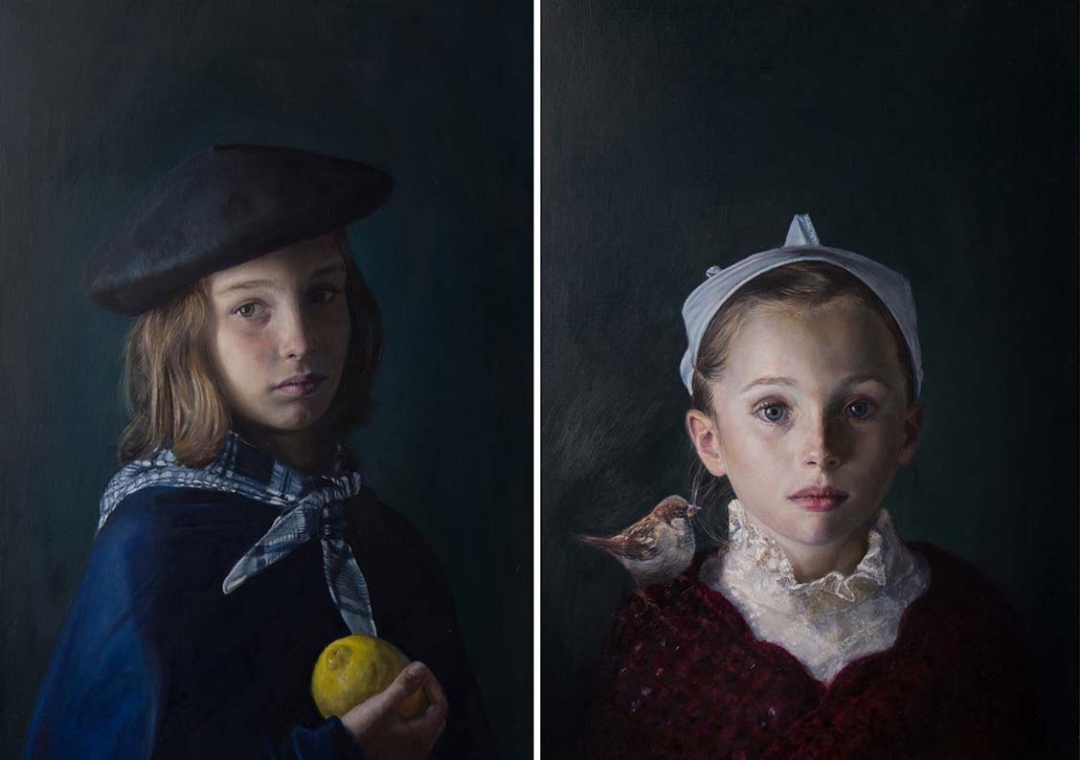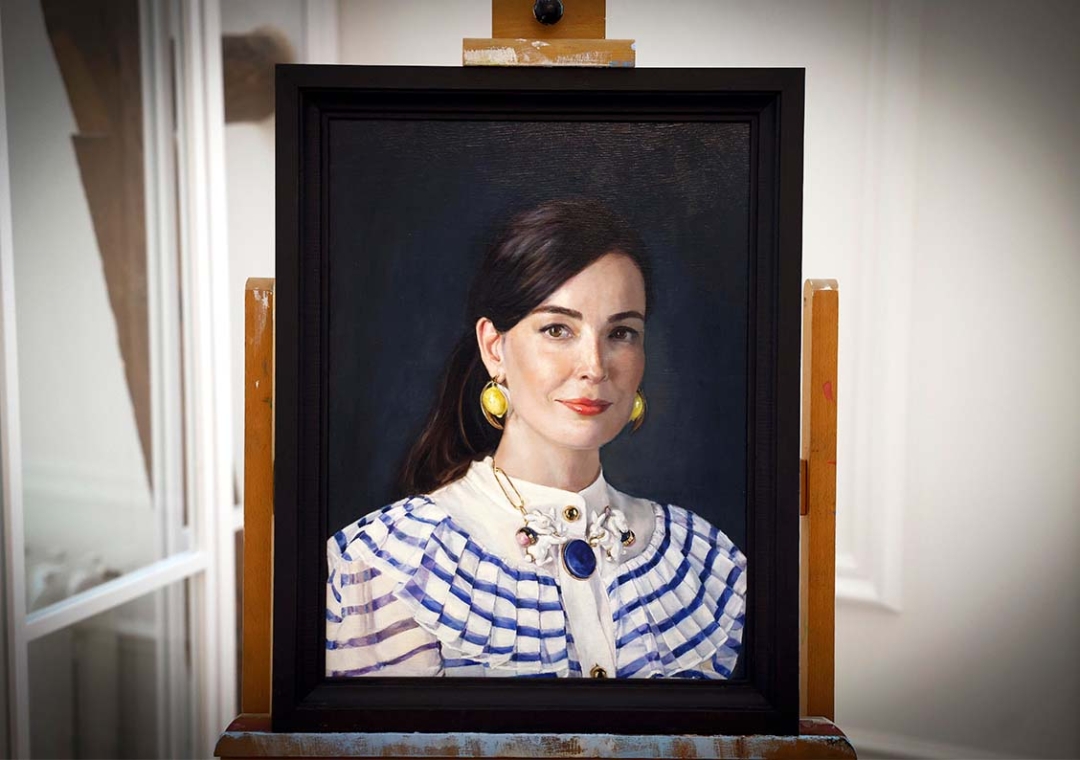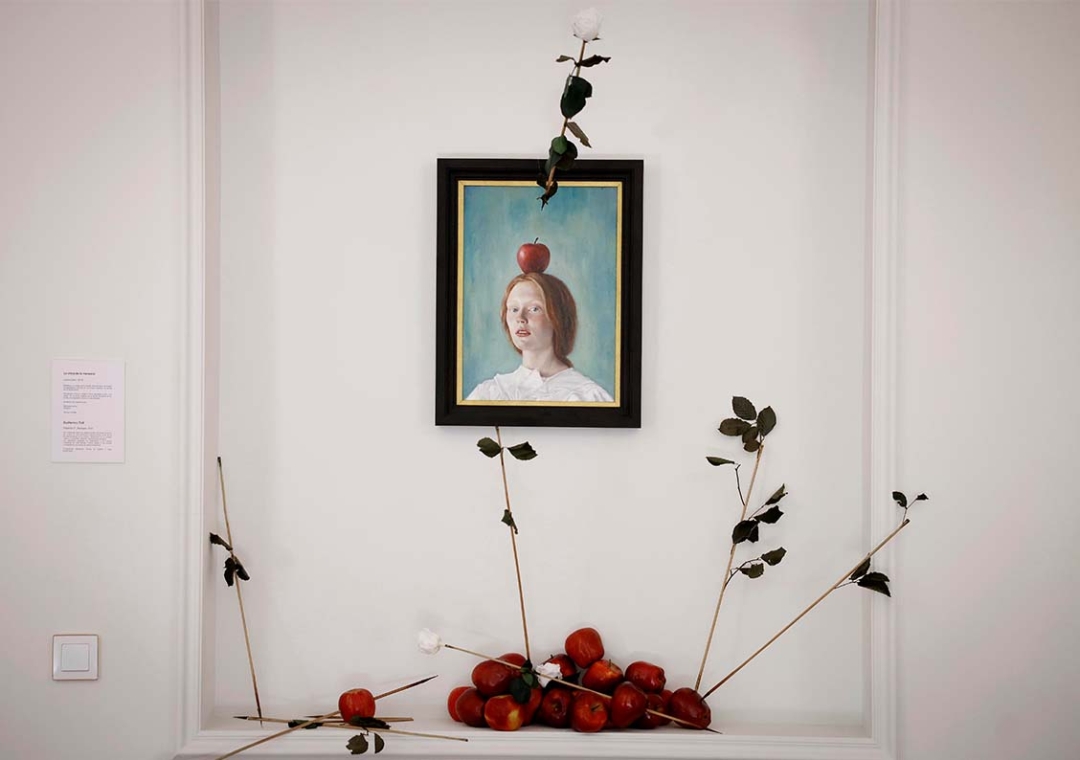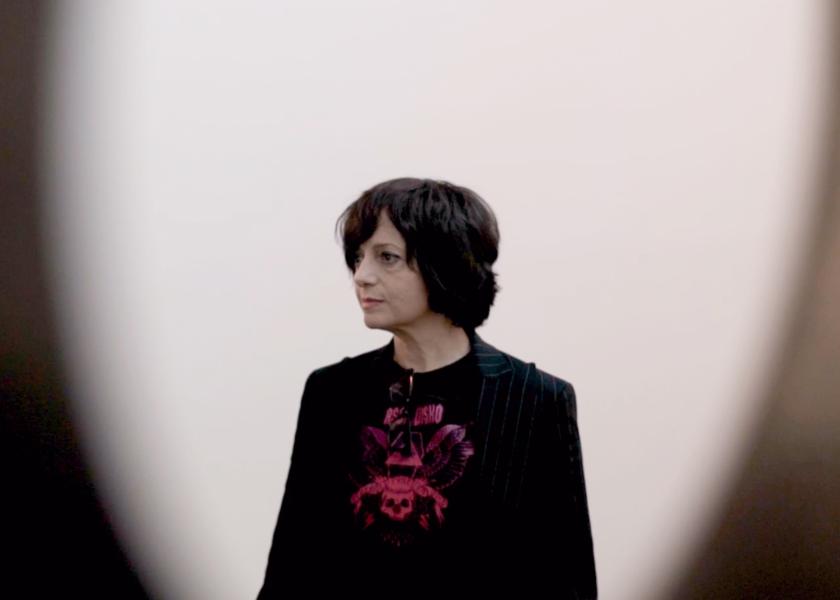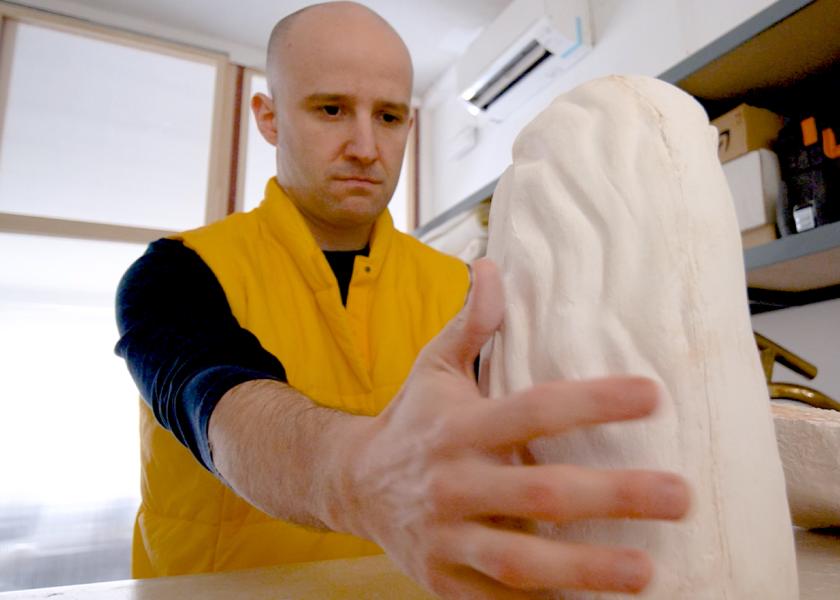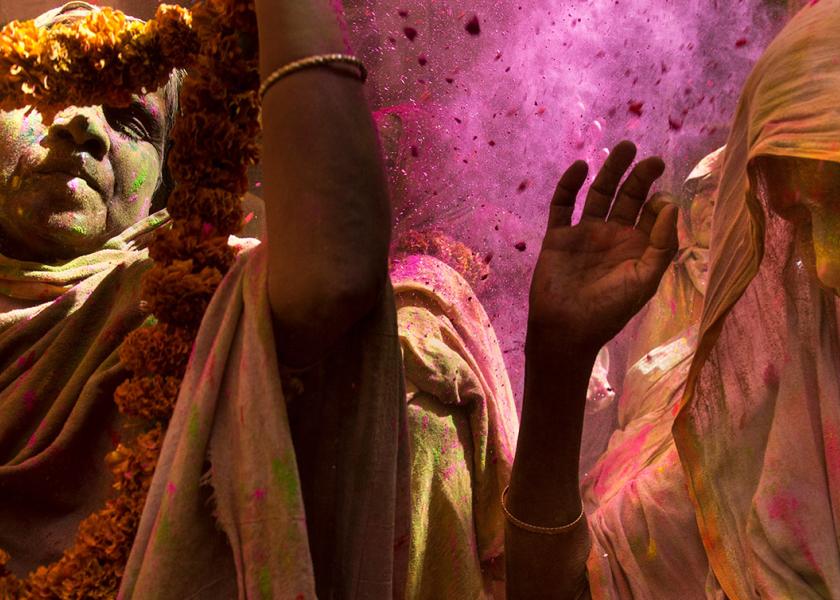Laura Cano
Travelling back in time
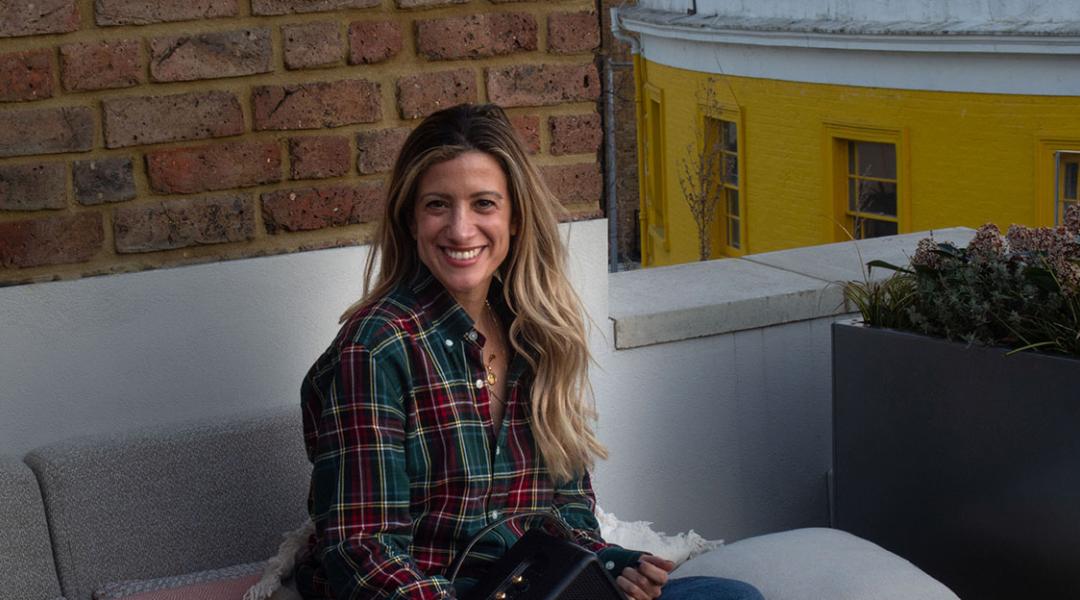
Laura Cano’s portraits inhale modernity and exhale classicism, which is why they’re able to transport the audience to bygone eras while remaining in the present. Brush stroke by brush stroke, and recovering antique colours, she recreates the hair, eyes, skin, or wardrobe of her models and delivers pieces that exude unusual innocence, beauty, and serenity. What’s behind this unique gaze?
Some say that she’s an 18th-century creator in the 21st century, some call her Niña Rembrandt, and others define her as the woman of humanism. The truth is that merely looking at one of Laura Cano’s delicate portraits is enough to travel back in time. She assures us that, although she’s flattered by those compliments, she really considers herself a contemporary artist, despite painting using classic techniques. With her unique view of the past, she’s created a new and unmistakable way of conceiving portraits. Because classics were never this modern. As well as being a painter, Laura also writes, collaborates with travel and interior design magazines, and is a professor at Stanford University.
When you were little, you dreamt of becoming a painter or a writer. How did you develop your talent for paintbrushes and quills?
At home, we’ve always been great readers and there was no censorship, I’ve read all sorts as far back as I can remember. I’ve also always written since I was given my first diary. I was such an intense child that my family would secretly read my diary and, when I stopped writing for some time, they were bold enough to ask me what had happened. And I’ve always loved painting but didn’t have the technique. When I started to learn, it was like a revelation. Sometimes life takes you along different paths and you need something drastic to happen to understand what you really want to do or who you want to surround yourself with.
What do each of your talents bring to the table? And what do they require?
I like painting in natural light, so I get up really early to make the most of the day. However, I write my articles at night. Everyone is talented, but I think the culture of sacrifice is disappearing. We want everything now, but you need to be consistent and disciplined. When I started painting with grisailles and glazes, I wanted to finish the painting that same day. “No, that layer needs to dry; you’ll have to wait two or three days to continue,” people warned me. Reality came crashing down, but painting has taught me patience.
“I’ve always loved painting but didn’t have the technique. When I started to learn, it was like a revelation”
Photography is an essential part of your paintings. What is your work process like?
Fortunately, the models in my paintings don’t need to spend days sitting in the same position because my paintings are based on photography. Once I get to know the person and they tell me what they’re like or what they want, we think about the wardrobe, the background, or the theme. The photo shoot is usually very relaxed and out of all the shots I suggest the images I like the most, but the client has the last word.
What inspires you when you paint?
Everything. A story I’ve been told, a detail in a museum painting, a sentence from a book, a still from a film, etc. Tim Walker’s Wonderful Things exhibition at the Victoria and Albert Museum made my head explode, Codex Seraphinianus by Luigi Serafini. The painting I’m working on now is related to some courses I did at the Abstract Art Museum, to Hieronymus Bosch, to Brueghel, to extinct animals, to the medieval bestiary, to Joan of Arc, and to fantastic Japanese creatures.
But who are your real role models?
I couldn’t name just one. I love Tanning, Magritte, Sorolla, Sargent, Vermeer, Rembrandt, Freud, Murillo, Rubens, Bacon… Even medieval art, which was much more modern than contemporary art. When something was unknown to them, they painted by hearsay thanks to a powerful imagination. In this sense, I’m fascinated by cabinets of curiosities and medieval bestiaries.
What makes Laura Cano different?
I’m extremely persistent and curious. I’ve even taken a painting to my hairdresser, who’s an expert in colorimetry, so she could tell me which colours she could see in the hair, because I’d pigeonholed myself into yellows and browns and didn’t like the result. Hair is a unique creature: it includes violets, blues, reds, oranges... None of which you’d expect! I also talk a lot to my dermatologist, who teaches me about skin characteristics. Skin is, without a doubt, what I enjoy painting the most, because it includes absolutely all colours.
You paint with antique colours, like lapis lazuli from Afghanistan. Why do you look back at the past?
My choice of lapis lazuli is romantic. For starters, it’s a semiprecious stone, can you imagine painting with that? It was a late pigment that was expensive and hard to come by and was once worth more than gold. You had to be able to afford blue, and painters would fall into debt to get it. Legend has it that Michelangelo left The Entombment unfinished because he ran out of blue. Or that Vermeer was able to paint the turban in Girl with a Pearl Earring, The Milkmaid, or Woman Reading a Letter because his patron supplied him with lapis lazuli. I needed to paint with it, and you can find it in all my paintings, especially in the eyes.
“Everyone is talented, but the culture of sacrifice is disappearing. You need to be consistent and disciplined”
What do you look for in each of your portraits and who would you like to paint?
I’ve been lucky enough to choose who I paint: special children with a magic touch, like El Vasquito or La Neskita, or Allegra, a teenager who still holds that innocence and ingenuity that I wanted to portray before she grew up. The portraits I’ve been commissioned have also ended up being for wonderful people. My dream would be to do a portrait of Dolly Parton.
What is your view of talent within the world of art?
There are many with natural talent, but those of us who don’t possess it need to be constantly learning, looking for role models, working hard, and being disciplined. I don’t understand when people call decorations —paintings bought to go with a room— art. Art should be so powerful that it’s the room that adapts to the piece. I don’t believe in formulas; if something moves you, that’s art.
